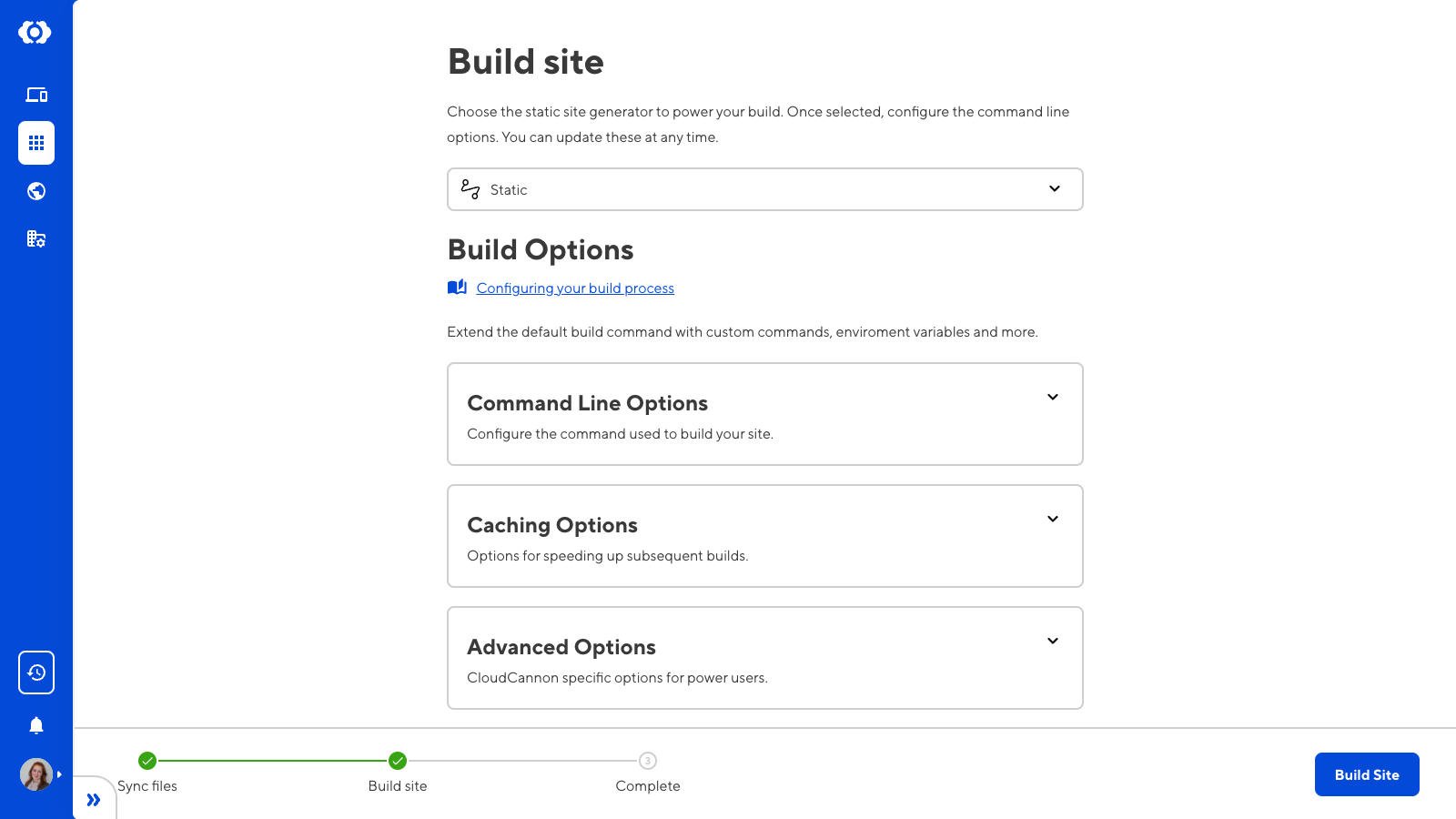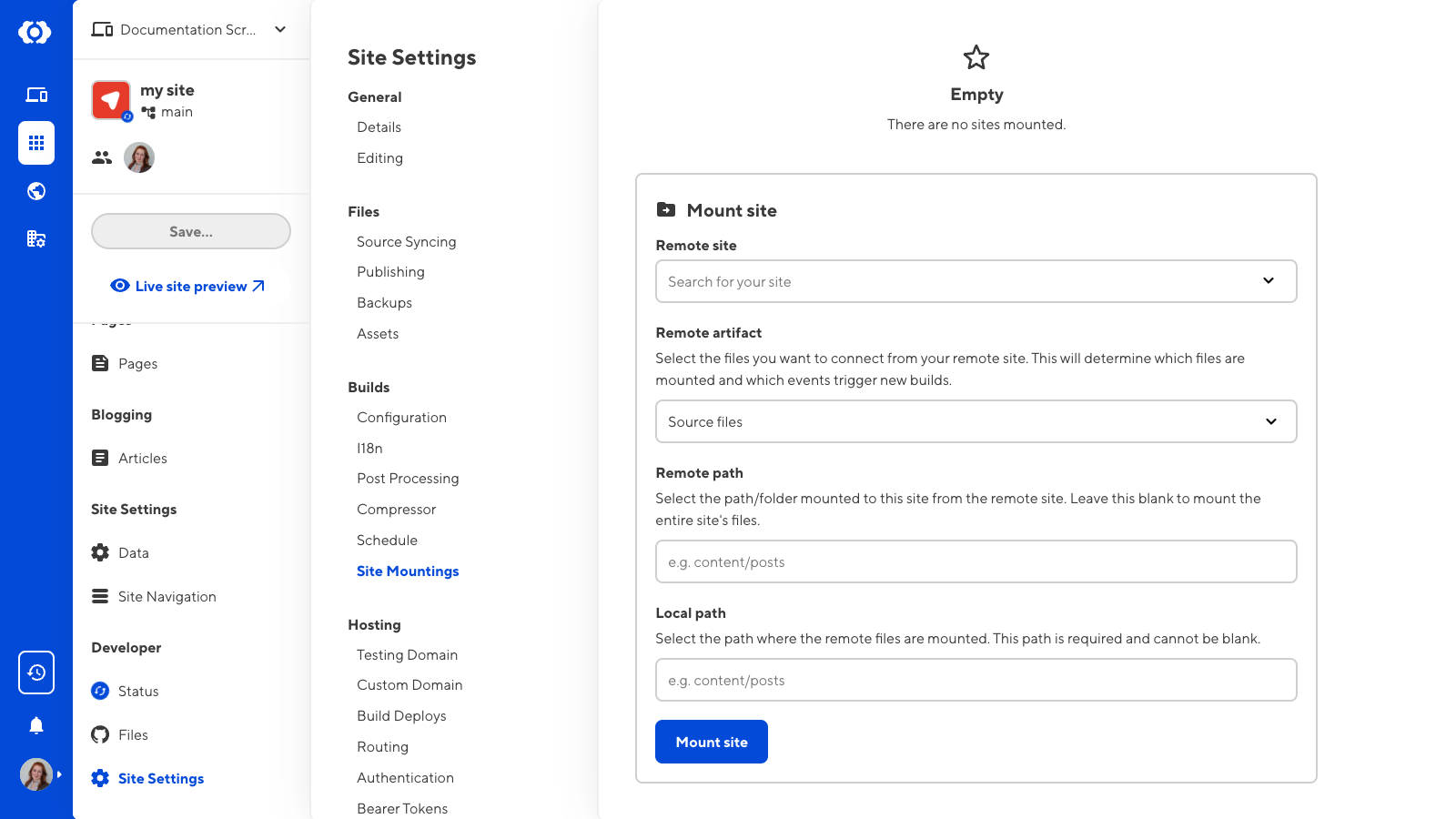With CloudCannon's Site Mounting feature, you can make one site dependent on one or more other CloudCannon sites. Files from a remote site are accessible to the local site at build time. For Hugo sites, you can use Site Mounting to emulate Hugo Modules.
Site Mounting may be preferable to Hugo Modules, especially if your site would benefit from the ability to:
- Trigger an automatic build whenever your modules are updated.
- Access your private module repository without the need to generate an authentication token.
In Site Mounting, CloudCannon refers to the donor site as the Remote Site and the site that receives files as the Local Site. In this example, the remote site will contain your modules. The local site is your main site.
This setup requires that you own your site repository and the repositories for your modules. These repositories should be in the same GitHub organization. If you use a public repository owned by someone else, you must fork it into your GitHub organization.
Disable the default Hugo Module import#
To emulate Hugo Modules with Site Mounting, you must disable the default Hugo Module behavior in CloudCannon. The simplest method of disabling this behavior is to create a second Hugo configuration file for use in CloudCannon, which does not contain your module import.
Your configuration file will look something like this:
baseURL = 'https://example.com/'
# ... all other config
# module.imports commented out or removed
# [[module.imports]]
# path = 'github.com/my/module'
If your site uses a configuration directory for Hugo, another option is to add a cloudcannon environment.
Turn your Hugo Module repository into a CloudCannon site#
Site Mounting works between two CloudCannon sites. Add a new site to your CloudCannon account and connect it to your module repository.
The build settings for this site do not matter, as we will only mount the source files to our local site.
On the Build Site page, select Static from the SSG dropdown menu. This will allow your build to succeed without configuring a build command.

By default, these files are accessible on this site's Testing Domain. To prevent access to the testing domain, switch the module site to password authentication and do not set a password.
Mount the module site to your main site#
Open your main site in CloudCannon. To configure your Site Mounting settings, navigate to the Site Mountings page under Site Settings, then Builds.

In the Remote site field, select the CloudCannon site that contains your module files.
Leave the Remote artifact field set to "Source files".
Enter the paths you want your module to mount for your Remote and Local paths. For example, given the following Hugo configuration:
module:
mounts:
- source: theme/layouts
target: layouts
If your module configuration were the code above, you would enter "theme/layouts" into the Remote path field and "layouts" in the Local path field.
Once you have completed your configuration, click the Mount site button.
New build of your main site#
In your main site on CloudCannon, navigate to the Status page. Click the Rebuild button. CloudCannon will mount the module content at the your specified path before running your Hugo build command.
Any changes to your module repository will trigger a new build of any site to which the content is mounted. You don't have to worry about keeping your sites up to date.
Mounting multiple paths#
In some cases, you may want to mount your module to multiple paths. For example, given the following Hugo configuration:
module:
mounts:
- source: layouts
target: layouts
- source: assets
target: assets
In CloudCannon, you can mount the same remote site multiple times at different paths. Repeat the above steps and specify a different Remote and Local path to mount it again.
If the paths you want to mount are more complicated or there are many paths, you can mount the entire module to a temporary location and use CloudCannon's Build Hooks to move your module files to the correct location.